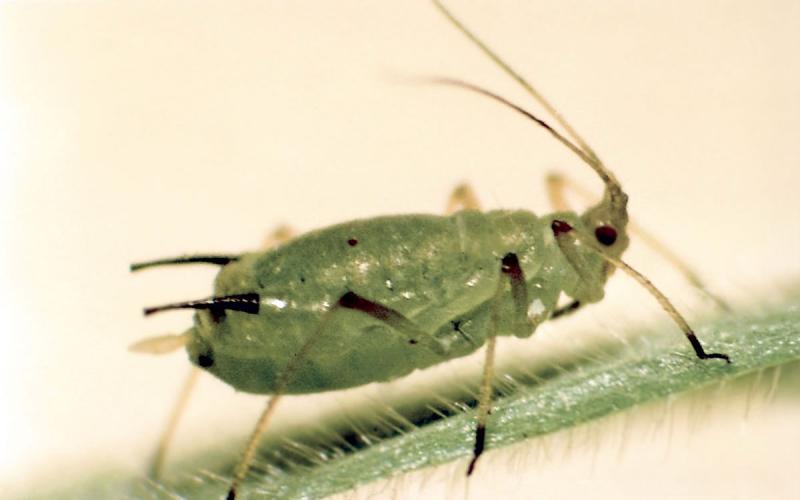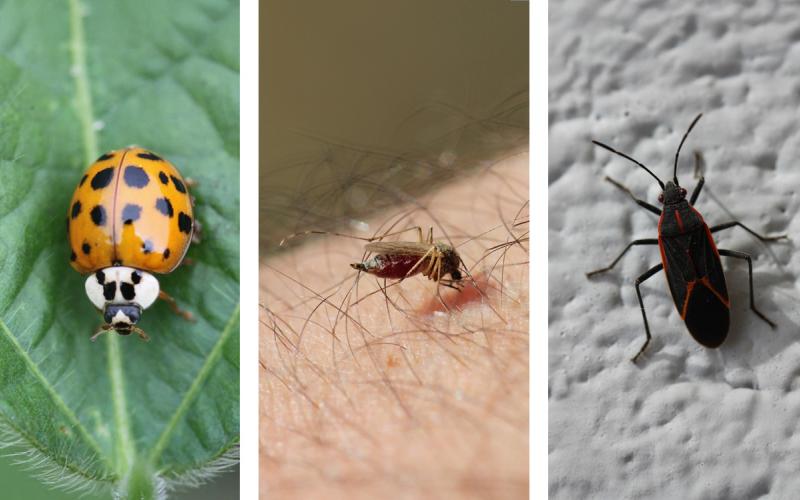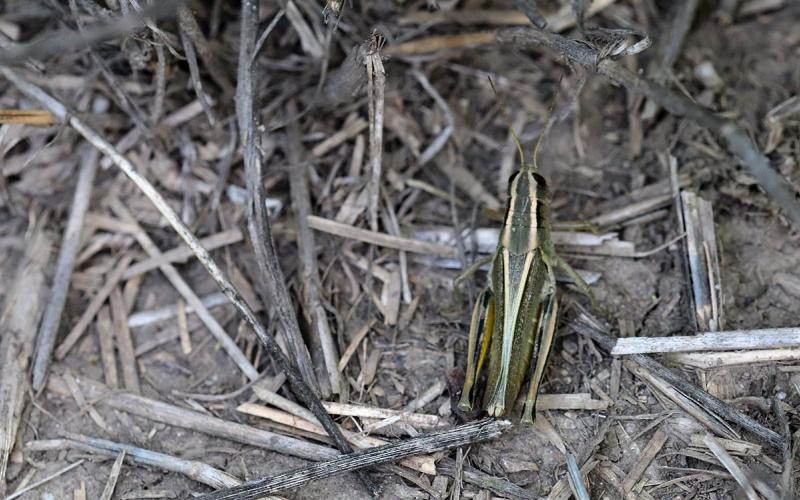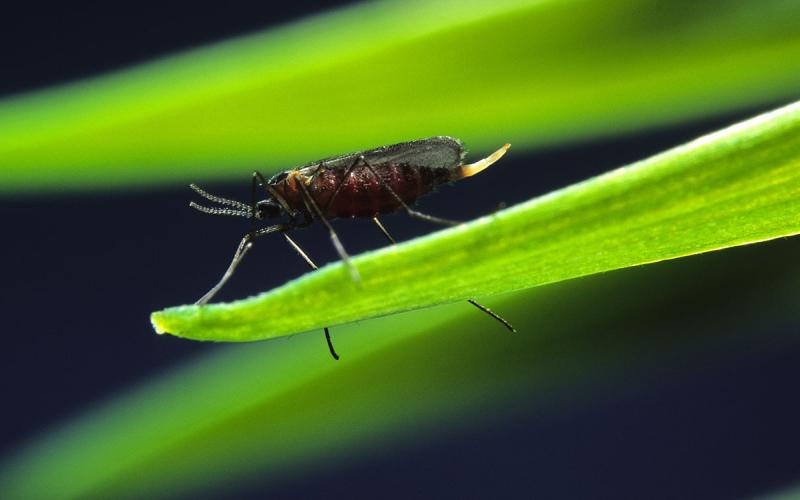
Written collaboratively by Adam Varenhorst, Philip Rozeboom, Patrick Wagner, and Brad McManus.
The English grain aphid (Figure 1) populations are continuing to increase in wheat this week. We haven’t quite reached threshold yet, but I suspect many fields will reach threshold in the next week or so (for economic thresholds, see our previous article, Don’t Forget To Scout for Aphids in Wheat). With the increasing aphid pressure, it is important to scout wheat fields to ensure that the populations do not cause yield loss. In last week’s Pest & Crop Newsletter, we stated that we didn’t observe any natural enemies in the wheat field, but this week we were pleasantly surprised by the number of species present as well as the dramatic increase in their numbers. We observed several species of parasitoid wasps as well as several species of lady beetles.
It’s important to remember when scouting for pests such as aphids, the natural enemy populations that are present need to be taken into consideration when making management decisions. Aphid population growth can be slowed dramatically by the natural enemy community. However, a single application of insecticides will reduce the aphid populations but also the natural enemies at the same time. Reducing the natural enemy populations can result in an aphid resurgence if another population of aphids moves into the wheat or if the entire aphid population wasn’t killed with the insecticide application. This often results in the need for retreatment to reduce the aphid populations.


